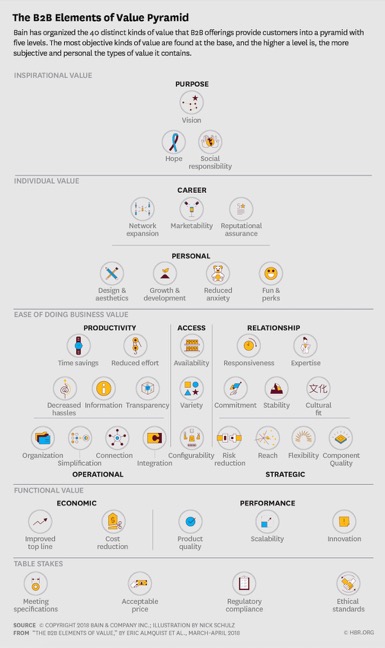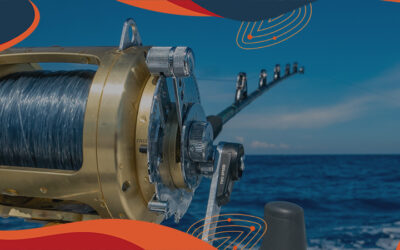As we move through the evolution of B2B marketing, lead generation, and prospecting, there is more ambiguity than ever. As the sheer volume of information available to buyers increases exponentially, the weariness of “marketing qualified leads” to speak to a sales person continues to become more pronounced, and as the commodification of marketing software carries forward, the definition of a lead will change. Adapting to this shift can provide short-term sales gains and position your company for greater future sales success.
For years, buyers have become progressively savvier at answering their questions in the self-service channels the proliferation of content over the last decade or so has allowed. According to Kellogg School of Management Professor Andris Zoltners, “Buyers are at different levels of self-sufficiency: any single buyer can be at one level for some purchases and at a different level for others.”
Using Bain’s “B2B Elements of Value Pyramid,” we can see the various decision-making drivers among B2B buyers. While valuable for positioning, the decreasing level of objectivity as one moves up the pyramid is important to understand. We can also see the ability of a buyer to get their information in a self-service manner decrease as one moves up the pyramid. Review sites, such as G2 crowd, have greatly increased transparency and networks are relatively easy to tap for information that is not necessarily in the public domain.
- To successfully sell today, reducing the perception that the buyer should be utilizing self-service paths will be a winning strategy (for true sales people, this will not be a shock). Direct outreach that shows that an offering delivers elements of the value pyramid will help sales people shorten the prospect’s buying cycle.
Outreach > Inbound
Why wait for a form submission when there are contact databases with the information of exactly who you want to speak to in a company? With few exceptions other than a form on a pricing page, I don’t trust form submissions as a “lead.” Building a list of the targets you want to engage with, then approaching multiple channels to build the connection will result in far more powerful conversations than waiting for form submissions.
Tone Matters
Direct response copywriting has few, if any, places in B2B selling. You know who really loves direct response copywriting? Direct response copywriters. Instead, a conversational tone will build trust, drive content assimilation, and keep the “I’m being sold” alarm bells from going off (too loud at least).
Ultimately, prospects have built a habit to say “no.” Don’t let them off the hook with a marketing style email they can delete and forget about.
Personalization is KEY
Personalizing content at scale is difficult, but very effective. Contrary to popular belief, people aren’t “demanding” personalization, it’s just more effective at cutting through the noise. The right amount of contentand style of personalization should be subject to proper testing. Tough news on this, we are looking for marginal gains with personalization: it’s no silver bullet.
However, with a nominal 4% positive response rate increase on an email campaign, your pipeline is suddenly looking a lot better.
Conclusion
Outbound sales (not marketing) efforts done right will consistently result in a fuller pipeline with superior ROI than on a dollar spent towards “demand generation.”




